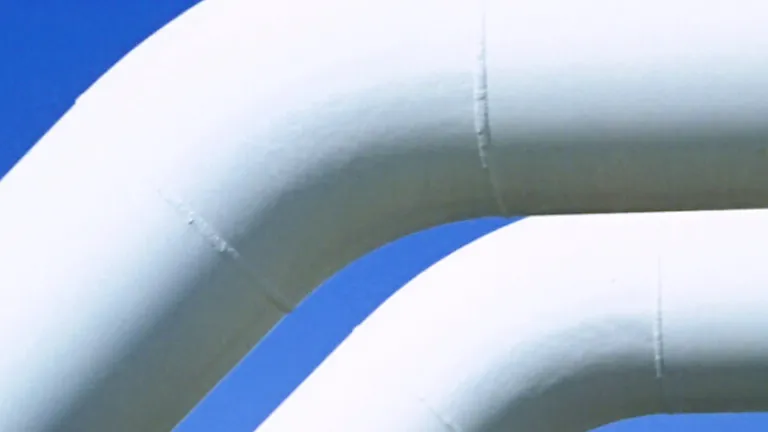Select the statement you want to use and copy it to your own computer. Upon publication: use the reference as part of the statement and make use of the inserted link.
Topics
Coal use - Fossil primary energy - Capital expenditure - Gas executives - 1,300 Senior energy professionals - Largest contributor to CCS - Carbon-free gas - The energy landscape - The transition - Renewables outsprint - Energy security - Progressive policy - Global emissions - Energy demand - Energy supply
Coal use peaked in 2014 but has come close to that level in recent years. However, its share of primary energy falls from 26% today to 10% in 2050.
(Source: DNV, 2023, Energy Transition Outlook) - All topics ↑
Fossil primary energy demand declines from 490 EJ to 314 EJ by 2050. Cumulatively, the fossil energy not used compared with today's use amounts to 1,673 EJ or 275,000 million barrels of oil equivalent by 2050.
(Source: DNV, 2023, Energy Transition Outlook) - All topics ↑
In 2022, 80% of capital expenditure (capex) in the Blue Economy is invested in the offshore oil and gas sector, but by 2050 that number will have dropped to 25%. By then, offshore wind will receive the largest investments, accounting for half of all apex.
(Source: DNV, 2022, Ocean’s Future to 2050) - All topics ↑
Early in 2022, 52% of oil and gas executives said that their organization would make acceptable profits if oil prices averaged USD 40 to USD 50 per barrel. In December 2022 and January 2023, only 39% felt the same, as a record year of profits for the oil and gas industry redefined the sector’s perception of acceptable profits.
(Source: DNV, 2023, Trilemma and Transition: The momentum to break barriers) - All topics ↑
Out of over 1,300 senior energy professionals surveyed in December 2022 and January 2023, 53% of respondents from the oil and gas industry say that their organization will increase investment in gas in 2023, up eight percentage points year-on-year. Some 43% expect to increase investment in oil, up nine percentage points.
(Source: DNV, 2023, Trilemma and Transition: The momentum to break barriers) - All topics ↑
By 2025, the largest contributor to CCS will be the natural gas processing industry with a share of about 40%. By the year 2050, the total energy-related captured CO2 is estimated to reach 1.25 GtCO2, with ammonia accounting for 46%, followed by e-fuel at 14%, and hydrogen at 8%.
(Source: DNV, 2023, Energy Transition Outlook) - All topics ↑
By mid-century, just 6% of gas will be carbon-free, of which hydrogen will supply roughly one quarter, with the balance made up through CCS in power and industry and by biomethane.
(Source: DNV, 2023, Energy Transition Outlook) - All topics ↑
The energy landscape will look very different in the space of a single generation
Emissions from oil use will peak in 2025 and those from natural gas in 2027.
From 2024, the share of renewables in the primary energy mix will grow by more than one percentage point per year, resulting in a 52% non-fossil share by 2050, up from 20% today.
(Source: DNV, 2023, Energy Transition Outlook) - All topics ↑
The transition is still at the starting blocks
Global energy-related emissions are still climbing and are only likely to peak in 2024. That is effectively the point at which the transition begins, even though across many nations and communities, energy-related emissions have already started to fall.
Over the last five years (2017–2022) renewables have met 51% of new energy demand and fossil sources 49%. In absolute terms, fossil-fuel use is still growing.
The ‘grab for gas’ in the wake of Russia’s invasion of Ukraine, and the disruption of the oil market, has led to high prices and a surge in new oil and gas projects.
High gas prices have also seen several countries intensify coal-fired power generation over the last 18 months, driving emissions yet higher. Natural gas is losing its status as a ‘bridging fuel’ for the transition.
(Source: DNV, 2023, Energy Transition Outlook) - All topics ↑
Renewables outsprint fossils from the mid-2020s
It will take the next 27 years to move the energy mix from the present 80% fossil 20% non-fossil split to a 48%:52% ratio by mid-century.
From 2025 onwards, almost all net new capacity added is non-fossil.
Over the next decade, new fossil production in low- and medium-income countries will largely be nullified by reductions in high-income countries.
Coal use peaked in 2014 but has come close to that level in recent years. However, its share of primary energy falls from 26% today to 10% in 2050.
Fossil primary energy demand declines from 490 EJ to 314 EJ by 2050. Cumulatively, the fossil energy not used compared with today's use amounts to 1,673 EJ or 275,000 million barrels of oil equivalent by 2050.
(Source: DNV, 2023, Energy Transition Outlook) - All topics ↑
Energy demand in 2050
Feedstock demand for natural gas will remain stable at the current level of 18 EJ, while non-energy oil demand rises from some 22 EJ to peak at 26 EJ in mid-2030s before returning to today’s level by 2050.
Transportation
- Between now and 2050, passenger flights will grow 140%, cargo tonne-miles at sea will expand by 40%, and rail energy demand will almost double. Nevertheless, global transport activities will consume 9% less energy than at present, or 111 EJ, and there will be a 46% fall in the use of oil for transport (-50 EJ).
- Passenger air trips per year are likely to rise 140% above pre-pandemic levels by 2050, but efficiency gains will see fuel use rise by only 40%. Electricity is likely to cover just 2% of the aviation energy mix in 2050, green hydrogen 4%, and sustainable aviation fuels (SAF) 12%. That leaves oil still dominant by 2050, and 21% higher than now in absolute terms.
- Cargo transportation needs will considerably outweigh efficiency improvements by 2050; cargo tonne-miles will therefore increase in almost all ship categories, with a total growth of 40% between 2022 and 2050. Important shifts include coal transport reducing a fourth by 2050 in tonnes, crude oil tanker increasing global tonne-miles travelled by a fourth, while oil products transport reducing by 25%. From being almost entirely oil-based today, the 2050 fuel mix is 84% low- or zero-carbon fuels and 8% natural gas (mostly LNG). Ammonia has 36% of low- and zero-carbon fuels share, e-fuels 19%, and biomass some 25%. Potential for electrification in the maritime sector is limited and thus electricity will have only 4%.
(Source: DNV, 2023, Energy Transition Outlook) - All topics ↑
Energy supply in 2050
(Source: DNV, 2023,Energy Transition Outlook) - All topics ↑

